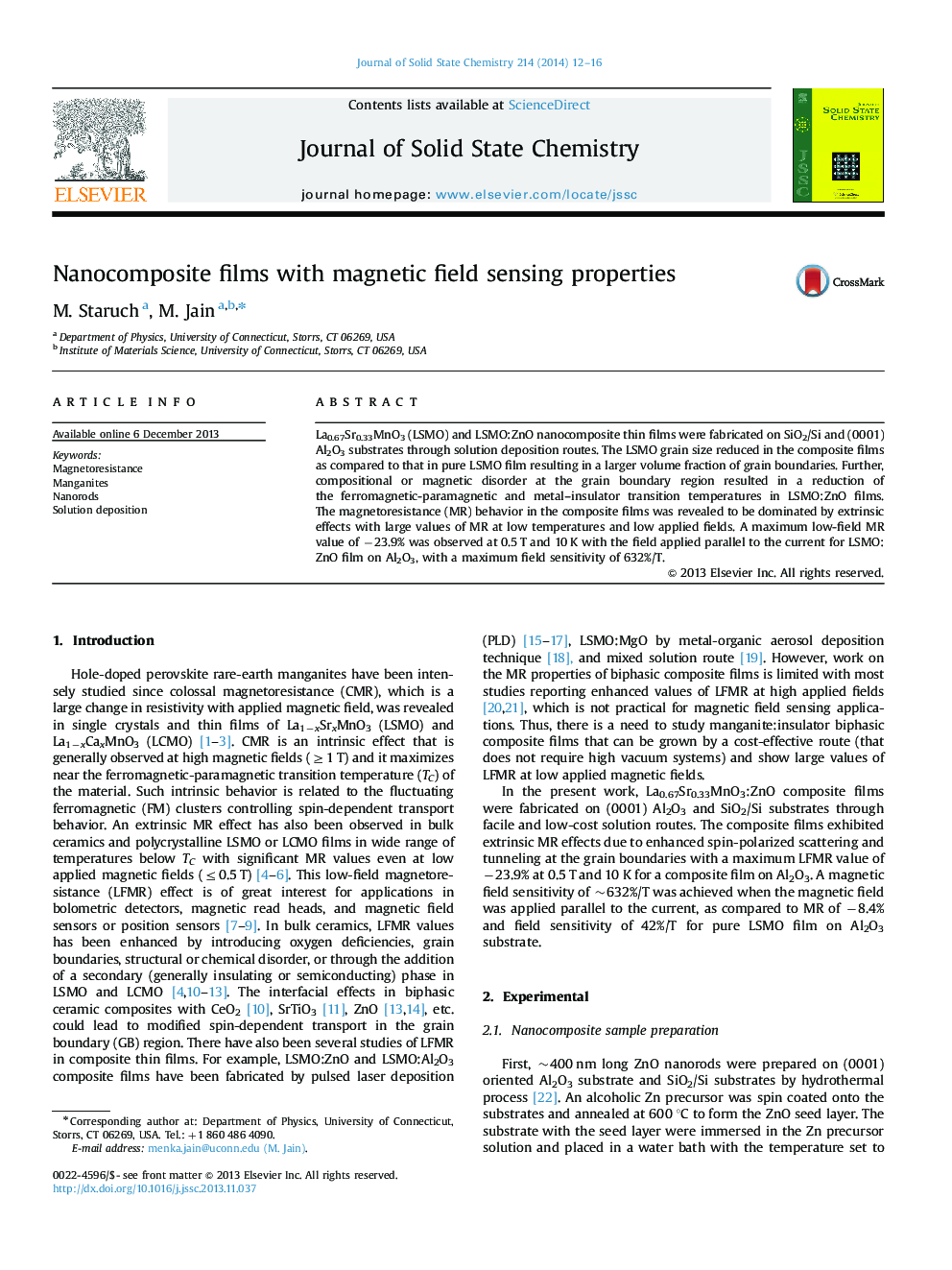| Article ID | Journal | Published Year | Pages | File Type |
|---|---|---|---|---|
| 1329775 | Journal of Solid State Chemistry | 2014 | 5 Pages |
•La0.67Sr0.33MnO3:ZnO composite films were fabricated by solution growth techniques.•Extrinsic magnetoresistance effects were dominant in the nanocomposite films.•Values of low-field magnetoresistance in composite films were enhanced as compared to those in pure LSMO film.•Maximum field sensitivity of 632%/T was found with magnetic field applied parallel to film.
La0.67Sr0.33MnO3 (LSMO) and LSMO:ZnO nanocomposite thin films were fabricated on SiO2/Si and (0001) Al2O3 substrates through solution deposition routes. The LSMO grain size reduced in the composite films as compared to that in pure LSMO film resulting in a larger volume fraction of grain boundaries. Further, compositional or magnetic disorder at the grain boundary region resulted in a reduction of the ferromagnetic-paramagnetic and metal–insulator transition temperatures in LSMO:ZnO films. The magnetoresistance (MR) behavior in the composite films was revealed to be dominated by extrinsic effects with large values of MR at low temperatures and low applied fields. A maximum low-field MR value of −23.9% was observed at 0.5 T and 10 K with the field applied parallel to the current for LSMO:ZnO film on Al2O3, with a maximum field sensitivity of 632%/T.
Graphical abstractThe magnetic field dependent magnetoresistance values at 10 K for La0.67Sr0.33MnO3 (LSMO) film on Al2O3 substrate are enhanced with addition of secondary phase in LSMO:ZnO nanocomposite films on SiO2/Si and Al2O3 substrates. The field sensitivity further increases when the field is applied parallel to the current (H//I).Figure optionsDownload full-size imageDownload as PowerPoint slide
